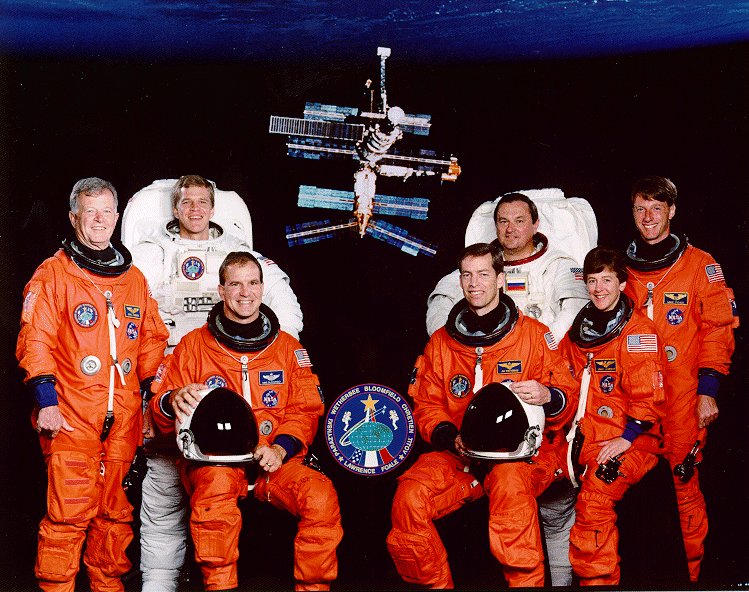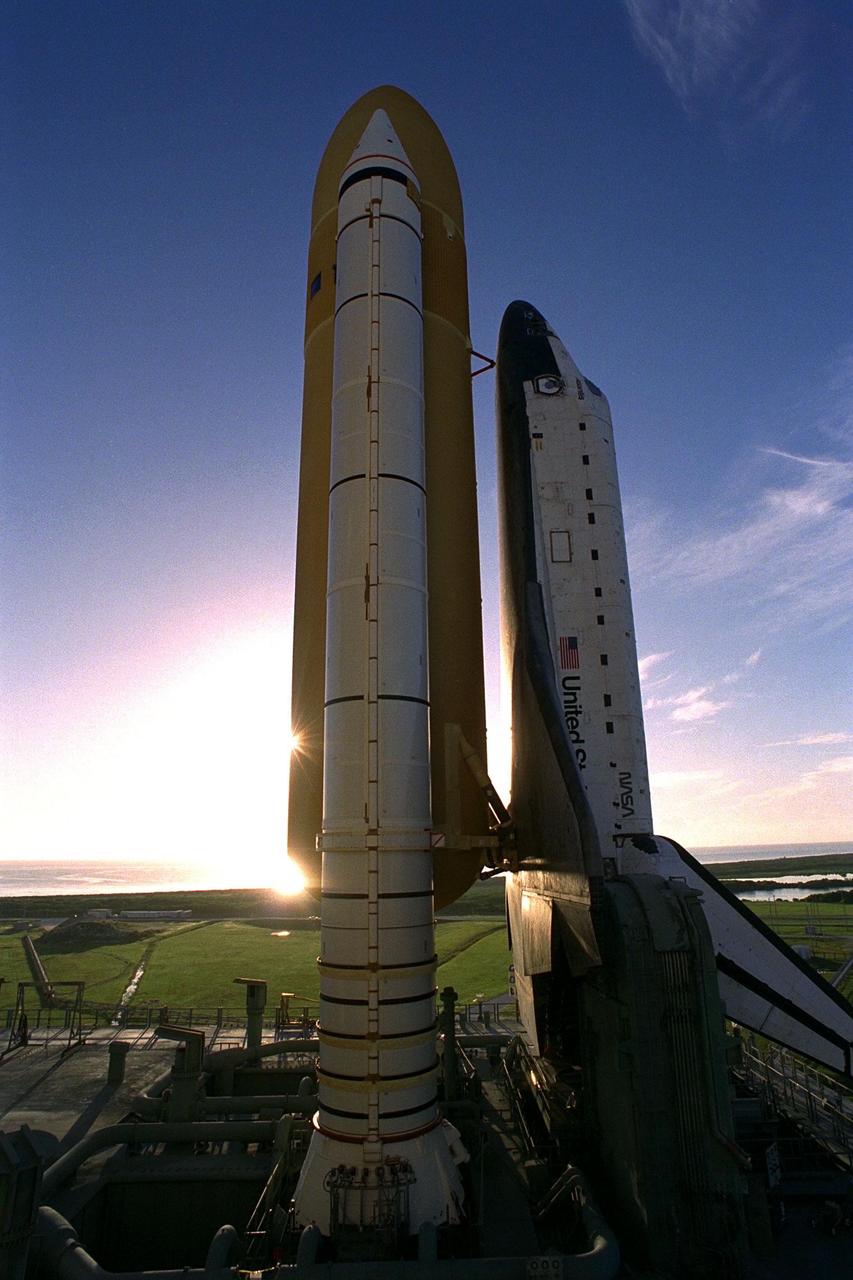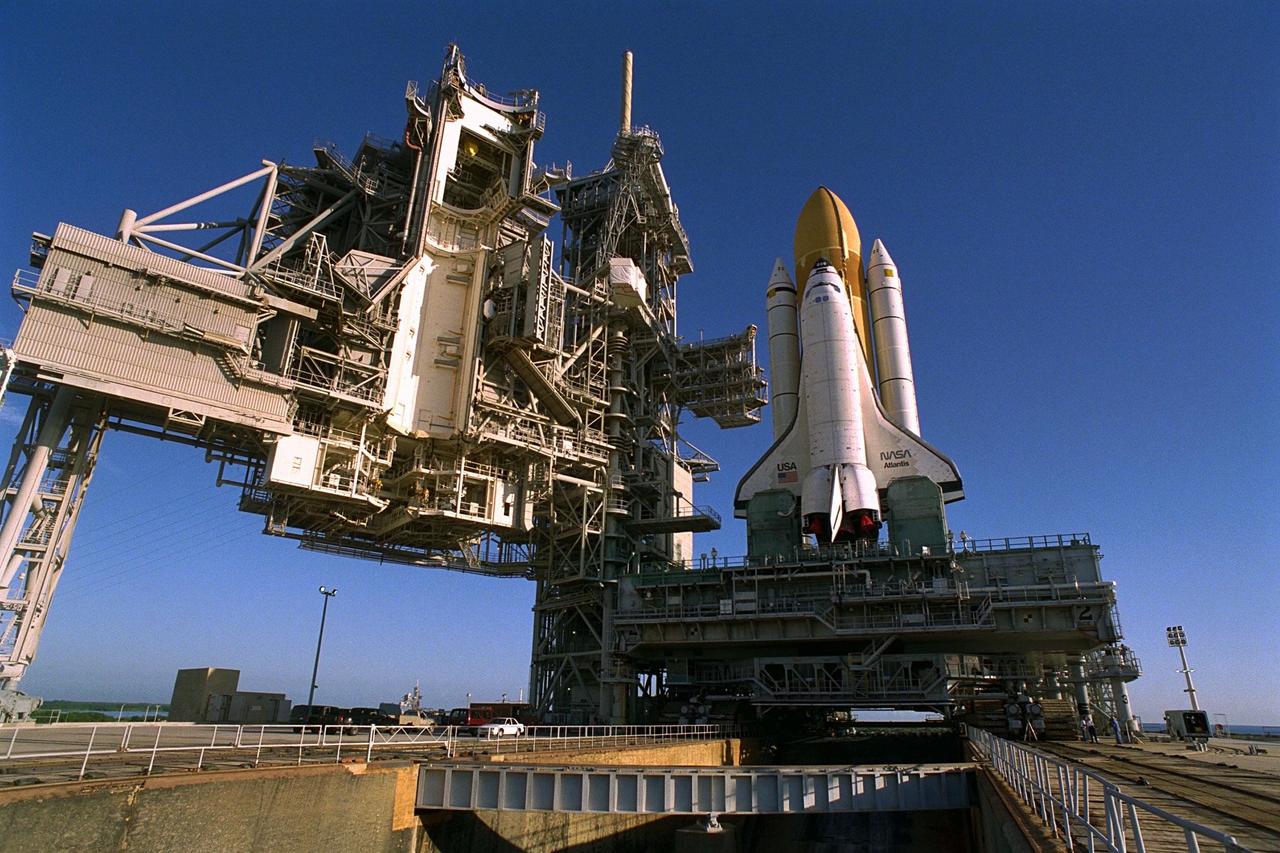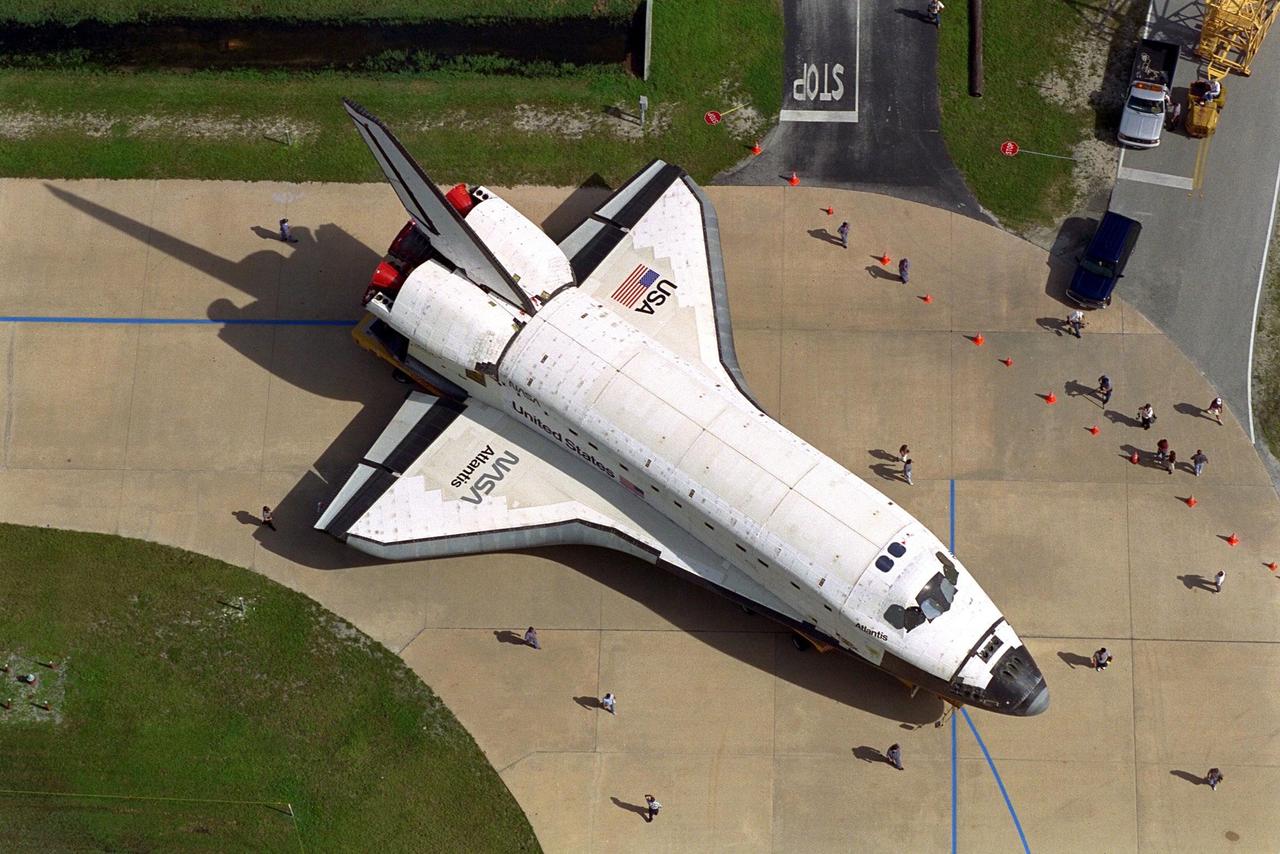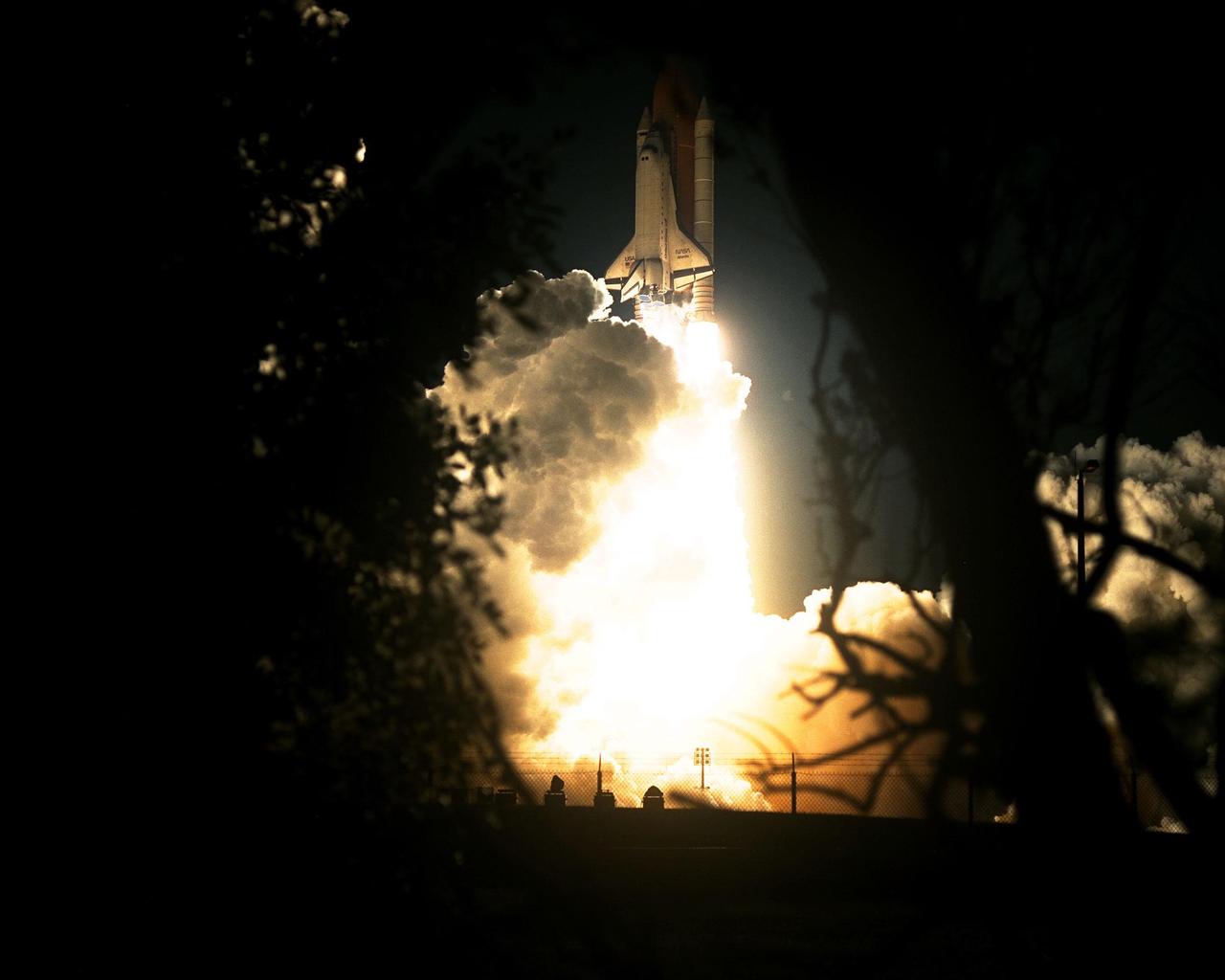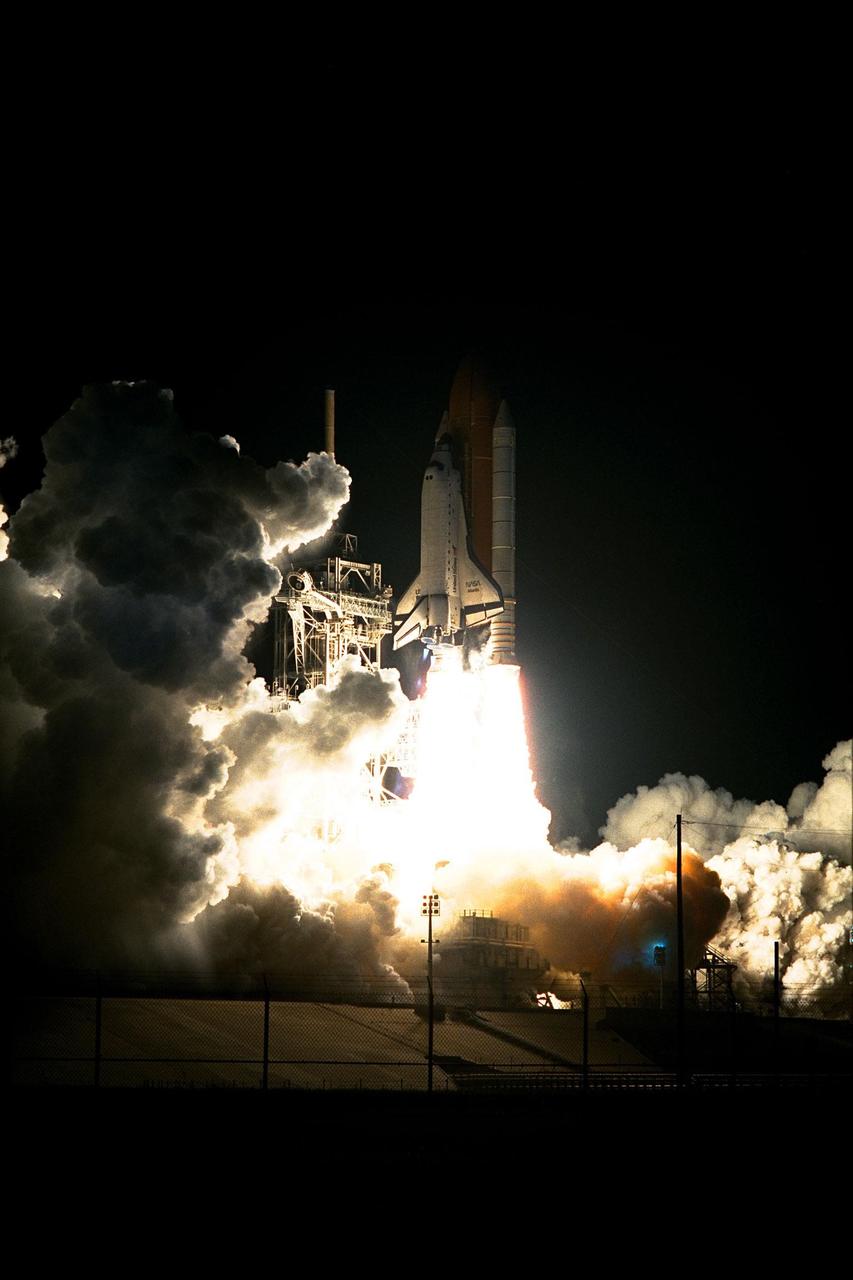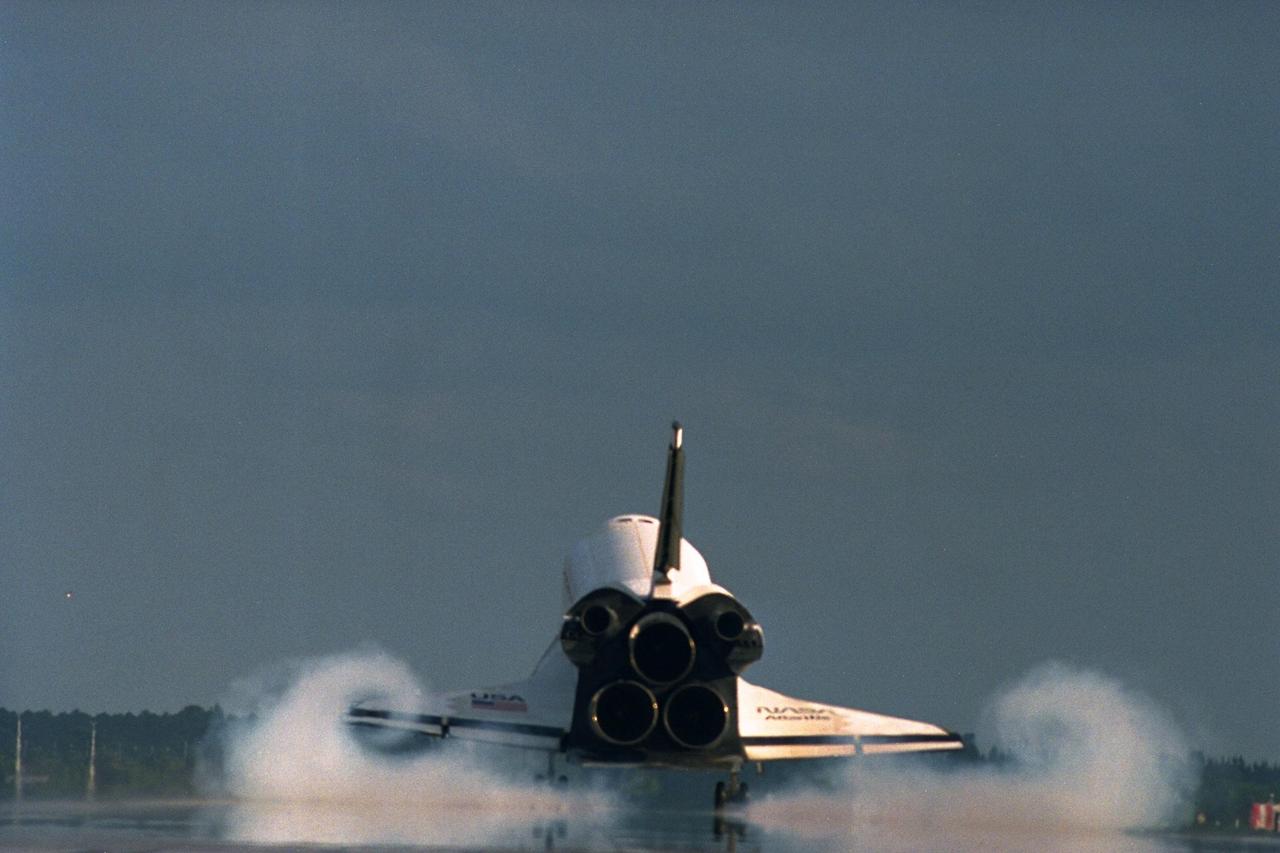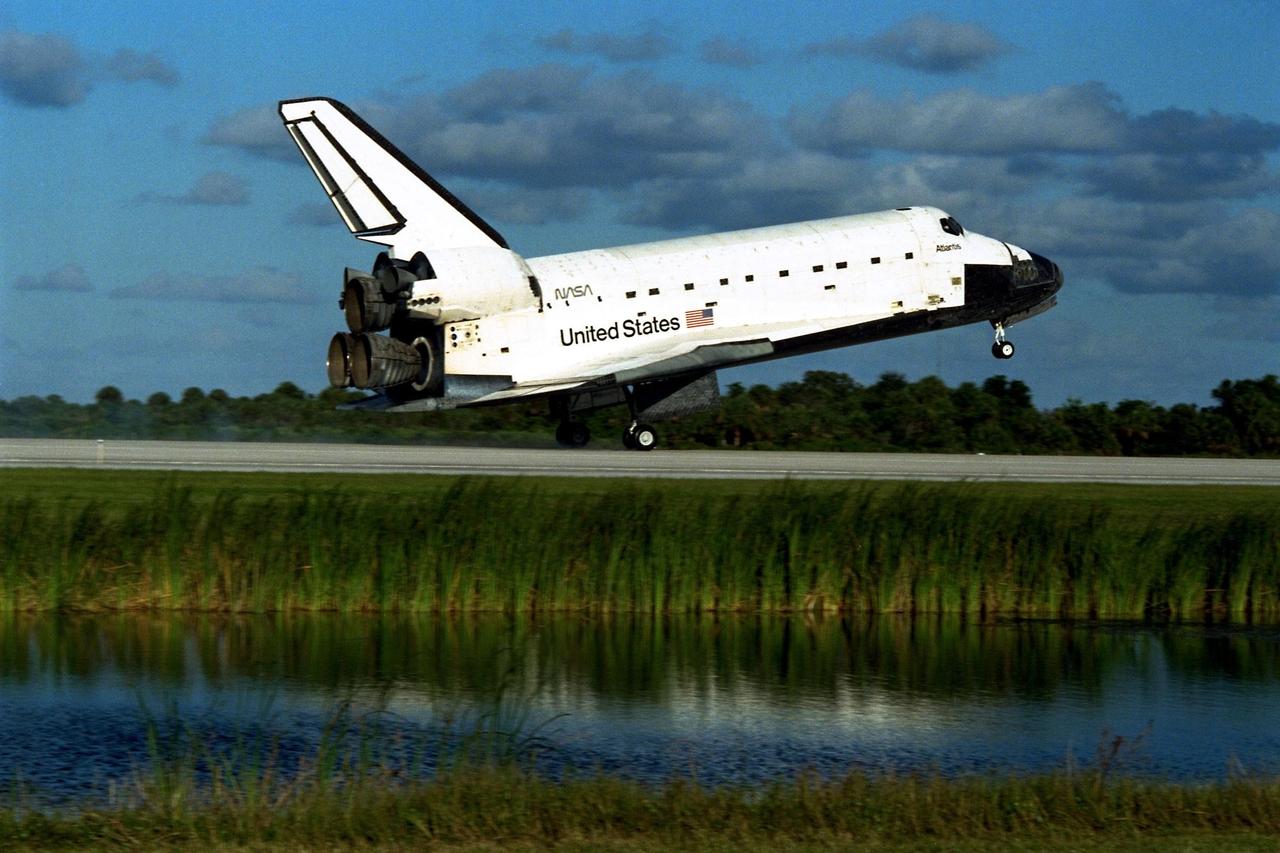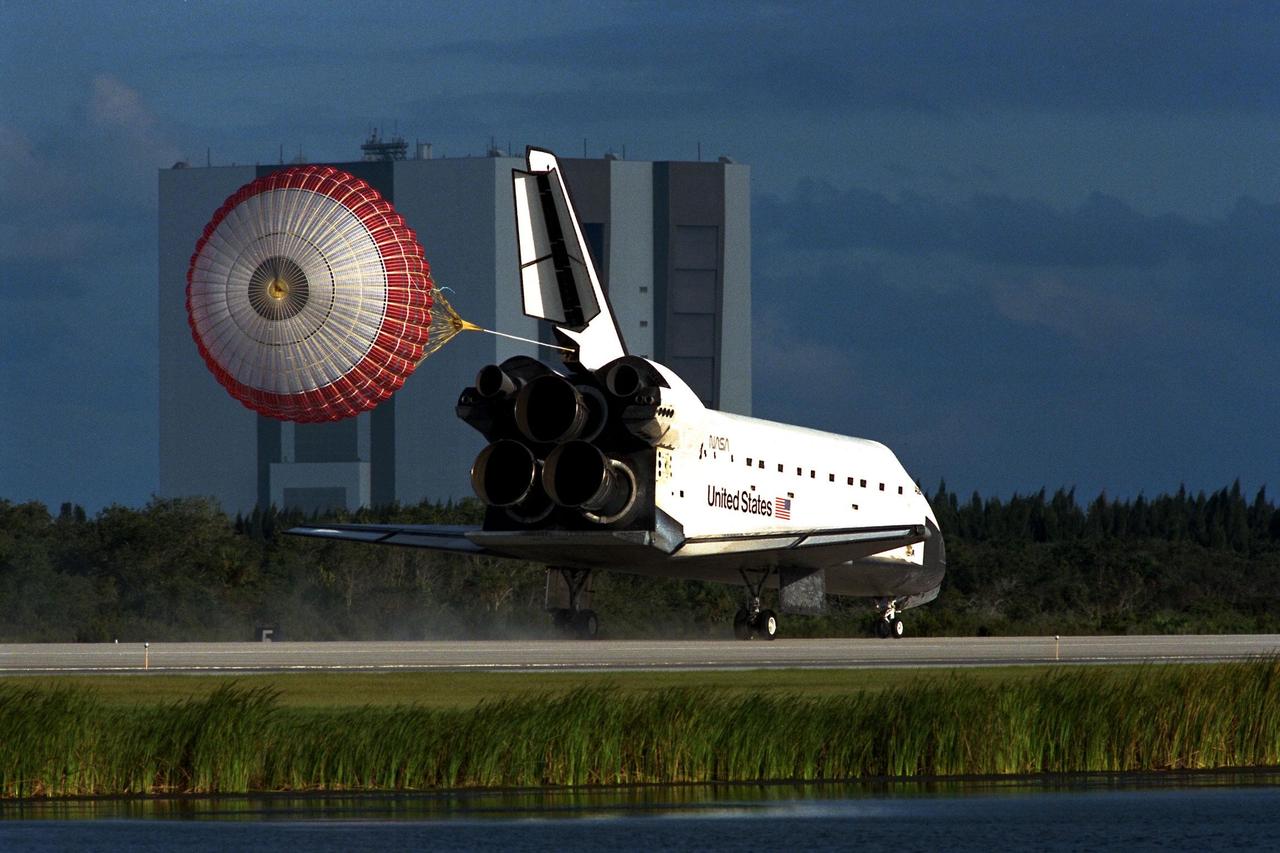STS-86 Fact Sheet
By Cliff Lethbridge

STS-86 — Atlantis
87th Space Shuttle Mission
20th Flight of Atlantis
Crew:
James D. Wetherbee, Commander
Michael J. Bloomfield, Pilot
Jean-Loup J.M. Chretien, Mission Specialist
Wendy B. Lawrence, Mission Specialist
Scott E. Parazynski, Mission Specialist
Vladimir G. Titov, Mission Specialist
Embarking to Mir:
David A. Wolf, Mission Specialist
Returning from Mir:
C. Michael Foale, Mission Specialist
Orbiter Preparations:
Tow to Orbiter Processing Facility – May 24, 1997
Rollover to Vehicle Assembly Building – August 11, 1997
Rollout to Launch Pad 39A – August 18, 1997
Launch:
September 25, 1997 – 10:34:19 p.m. EDT. Go-ahead for launch was authorized personally by NASA Administrator Daniel Goldin on the same morning the launch was scheduled. Last-minute reviews were necessary due to a plethora of technical problems with the Mir Space Station. Launch occurred as scheduled with no delays.
Landing:
October 6, 1997 – 5:55:09 p.m. EDT at Runway 15, Kennedy Space Center. Rollout distance was 11,947 feet. Rollout time was 82 seconds. Mission duration was 10 days, 19 hours, 20 minutes, 50 seconds. Landing occurred during the 170th orbit. Landing was originally scheduled for October 5, 1997 but was postponed one day due to cloud cover.
Mission Summary:
The primary goal of the mission was the seventh docking of a Space Shuttle to the Russian Mir Space Station and the fifth consecutive transfer of U.S. astronauts aboard Mir.
Astronaut David Wolf became the sixth astronaut in succession to board Mir, and astronaut Michael Foale logged a total of 134 days aboard Mir and 145 days in space before returning to Earth.
Astronaut Wendy Lawrence was originally intended to replace Foale aboard Mir, but a decision was made for Wolf to replace him instead. Lawrence would not be able to fit into a suitable Russian spacesuit nor had she been trained in spacewalking, which might become necessary during her stay due to lingering problems with Mir.
Docking of Atlantis to Mir occurred at 3:58 p.m. EDT on September 27, 1997 with hatch openings taking place at 5:45 p.m. the same day. Astronaut Wolf officially replaced astronaut Foale aboard the Mir at 12:00 noon EDT on September 28, 1997.
On October 1, 1997 the first joint U.S. and Russian spacewalk to take place during a Space Shuttle mission was conducted by astronaut/cosmonaut Titov and astronaut Parazynski.
During the 5 hour, 1 minute spacewalk, the pair affixed a 121-pound Solar Array Cap to the Docking Module which could be removed later and used by Mir cosmonauts in an attempt to seal a leak in the spacecraft’s Spektr module, which was damaged during a collision with an automated re-supply vehicle on June 25, 1997.
Also during the spacewalk, four Mir Environmental Effects Payloads (MEEPS) were retrieved from the outside of the Mir spacecraft. In addition, several jetpack components of the Simplified Aid for Extravehicular Activity Rescue (SAFER) system were tested.
During six days of joint docking operations, a total of about 8,000 pounds of equipment and supplies were transferred from Atlantis to Mir, including about 1,700 pounds of water.
Experiment hardware for the International Space Station Risk Mitigation study was transferred to Mir to monitor the Mir crew for health and safety. A gyrodyne, batteries, three air pressurization units with breathing air, a replacement motion control computer and a host of logistics items were also transferred.
Experiment samples, related hardware and an old oxygen generator were moved to Atlantis for a return to Earth.
Atlantis undocked from the Mir at 1:28 p.m. EDT on October 3, 1997. After undocking, Atlantis performed a 46-minute flyaround of Mir to allow a visual inspection of the spacecraft. During this maneuver, Mir crew members allowed air to enter the damaged Spektr module to see if astronauts aboard Atlantis could pinpoint any leaks.
During the flight, astronauts Wetherbee and Bloomfield fired small jet thrusters of Atlantis as part of the Mir Structural Dynamics Experiment (MISDE) which was intended to measure disturbances that could potentially adversely affect International Space Station components and solar arrays.
Experiments flown aboard Atlantis included Commercial Protein Crystal Growth (CPCG), Cell Culture Module Experiment (CCM-A), Cosmic Radiation Effects and Activation Monitor (CREAM) and the Radiation Monitoring Experiment-III (RME-III).
Other experiments included the Shuttle Ionospheric Modification with Pulsed Local Exhaust (SIMPLE), Midcourse Space Experiment (MSE) and two NASA educational outreach demonstrations called Seeds in Space-2 and Kidsat.
SELECTED NASA PHOTOS FROM STS-86
